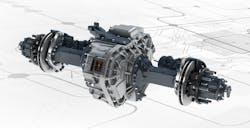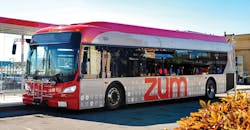Most people in the on-highway transportation industry have heard electrification is coming to commercial vehicles (CVs), and while it is still application dependent, everyone seems to have an interest in electrification of their fleet.
This article outlines five reasons to consider electrification for your fleet.
- Electrification of medium- and heavy-duty vehicles has arrived and the technology is already on the road. Newly released test models of commercial school and transit bus, refuse, drayage and delivery vehicles from several different OEMs have been on the road in the U.S. and the rest of the world for over a year, collecting thousands of miles of data and real-world experience. These tests are allowing OEMs and fleet customers to stay ahead of the competition and refine their technologies in advance of widespread adoption. Fleet owners, partnered with OEMs, are learning about the impact of reduced fuel costs and lower emissions along with route optimization to better understand vehicle range under different conditions. Allison Transmission, who has been making the electric-hybrid H 40/50 EPÔ for city bus applications since 2003, has a number of these OEM tests underway utilizing its traditional 3000 and 4000 SeriesÔ transmissions operating with an electric motor in commercial applications. The advantage of the Allison is that it multiplies the torque providing for faster acceleration from the electric motor and more energy efficiency.
Allison Transmission is the world’s largest producer of hybrid systems for heavy-duty transit applications.
- Significant progress has been made in power and torque. One of the latest advances in commercial electrification is Allison’s new e-axle. The AXE Series is one of the most powerful e-axle systems for medium- and heavy-duty trucks in the world. It’s a fully integrated electric powertrain system designed to fit inside a standard frame along the axles of commercial trucks. The system integrates single or dual electric motors, a multi-speed gearbox, oil coolers and pumps, eliminating the need for additional driveshafts and support structures. This allows the AXE Series to be a bolt-in solution by design, ensuring efficiency in the installation process. This also means that newly electrified vehicles can be on the road in very little time. A dual-motor axle has a continuous power of 536 horsepower (400 kilowatts) and peak output power of 738 horsepower (550 kilowatts). A tandem axle configuration (6x4) is also available for these vehicles. The system can handle 100% torque in regenerative braking. The complete integration of the AXE Series delivers increased efficiency and continuous power through superior internal cooling.
- Federal and state regulations reducing greenhouse gas and other emissions increase in 2021. Phase II of the Environmental Protection Agency’s (EPA) greenhouse gas (GHG) and NOx reduction requirements take effect in 2023 and California’s regulations tighten up in 2021 Trends in more fuel-efficient engines and transmissions have helped fleet owners meet the current standards and will help them as new regulations take effect, but electrification may be able to reduce fleet emissions and increase fuel efficiency in a much more significant way.
- Increased corporate sustainability goals will drive your customers to cleaner fleets. Simultaneous to new regulations, many larger corporations in the U.S. and E.U. have implemented new sustainability and environmental standards. For example, Target just announced new sustainability goals in March that call for a 30% overall reduction in GHG emissions and a commitment that 80% of its suppliers will meet their green goals by 2023. Fleet owners who are already utilizing alternative fuels and electrified vehicles will have a competitive advantage over fleets who are less willing to make the transition as more corporations seek lower emission from their supply chain partners.
- Investments made today will pay off in the long run. What are you waiting for? While there is a lack of real-world data on commercial electric vehicles in terms of maintenance, resale value and lifetime cost of ownership, there can be a financial advantage to an upfront investment in electric vehicles and charging infrastructure compared to diesel fuel costs over time. The payoff in fuel-efficiency becomes clearer after the first year of investment and continues to grow over the life of the vehicle.
If you would like more information on Allison’s full spectrum of alternative fuel products, including CNG, Hybrid, Flex EV and fully electric propulsion solutions, visit AllisonTransmission.com.

